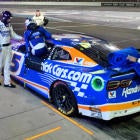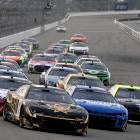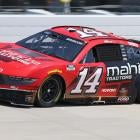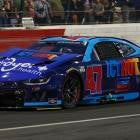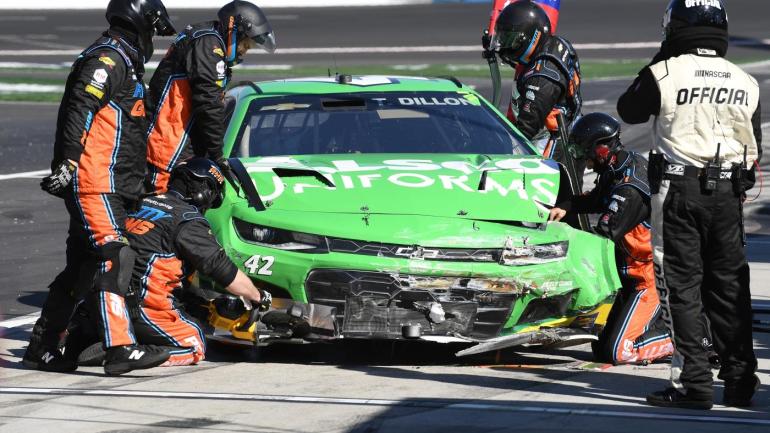
NASCAR announced an update to the sport's Damaged Vehicle Policy on Wednesday, increasing the amount of time permitted to teams to repair crash damage on pit road from six to 10 minutes. The increased time limit will go into effect beginning this weekend at Darlington Raceway.
In announcing the adjustment to the policy, NASCAR cited collaboration with its race teams throughout the 2022 season "following learnings on repair time of the Next Gen race car." According to multiple reporters, race teams had requested more time under the Damaged Vehicle Policy due to the complexity involved in Next Gen car repairs.
Under the Damaged Vehicle Policy, a race team has a time limit of 10 minutes -- beginning from the time the car enters pit road to the time it exits -- to repair a car that has been involved in a crash to the point that it can maintain minimum speed. If the time limit expires or the car cannot meet minimum speed within a run of three consecutive laps under green flag conditions, the damaged car will not be permitted to continue racing.
The Damaged Vehicle Policy was first implemented in 2017 as a means of preventing excessively-damaged cars from riding around on track at lower speeds and potentially dropping debris or fluid on the racing surface. In the past, race teams had been able to take a heavily-damaged car that was still able to run to the garage area for repairs, and then send it back onto the track to make laps and pick up potential positions and points once it had been sufficiently repaired.
After a number of crashes last weekend at Daytona, a total of three drivers -- Erik Jones, Harrison Burton and Brad Keselowski -- saw their races come to an end after running out of time on the DVP clock to repair damage they had sustained. Ryan Blaney's team was able to repair his car under the allotted DVP clock time after a crash early in the race, which ended up allowing Blaney to narrowly take the final spot in the NASCAR Playoffs.















